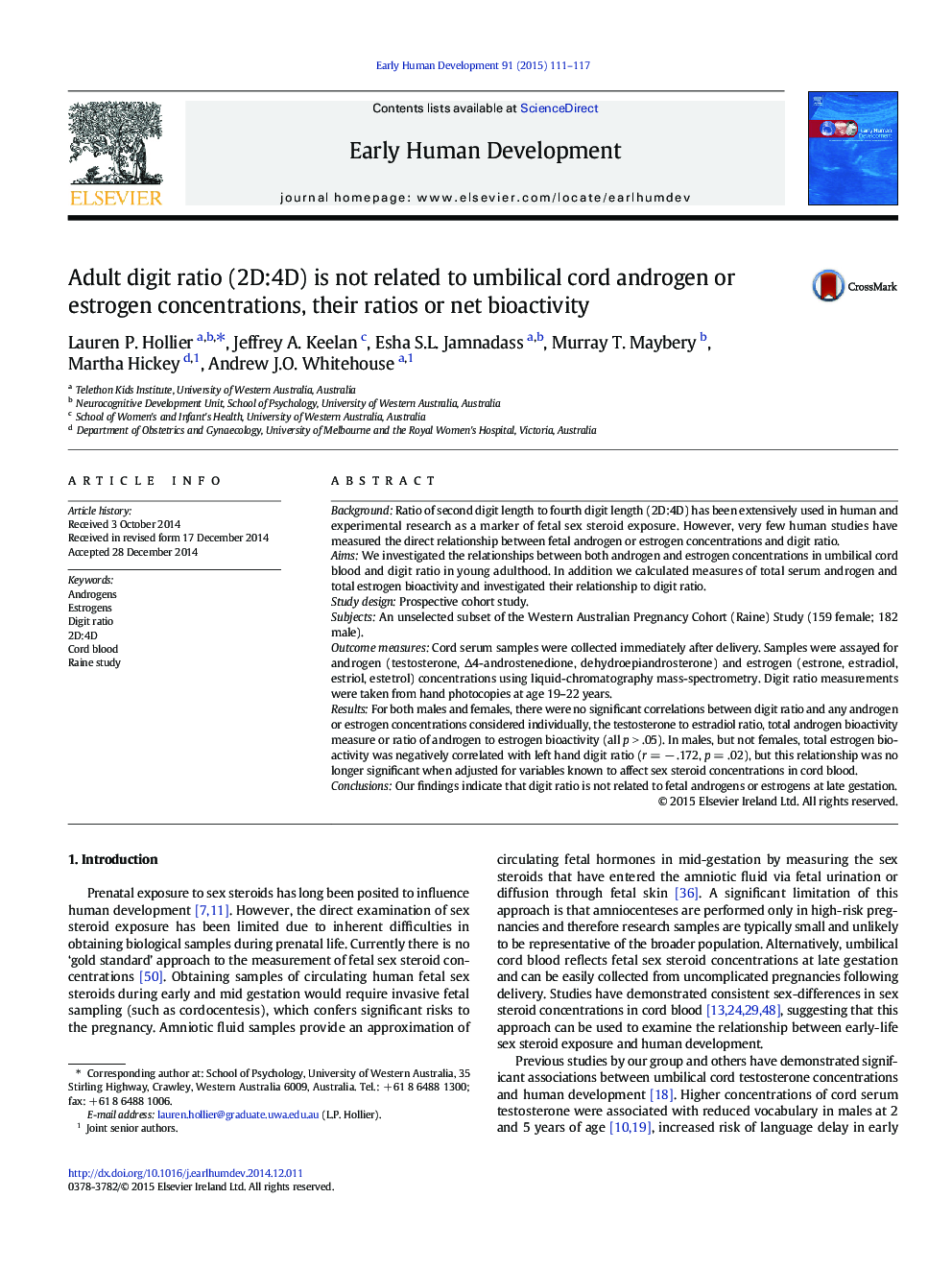| Article ID | Journal | Published Year | Pages | File Type |
|---|---|---|---|---|
| 3916463 | Early Human Development | 2015 | 7 Pages |
•Androgen and estrogen concentrations were measured from umbilical cord blood•Measures of total serum androgen and total estrogen bioactivity were calculated•Digit ratio in early adulthood was not related to testosterone or estradiol levels, or the testosterone to estradiol ratio•Measures of total androgen and estrogen bioactivity were not significantly associated with digit ratio•Late gestation fetal androgen and estrogen exposure is not related to digit ratio
BackgroundRatio of second digit length to fourth digit length (2D:4D) has been extensively used in human and experimental research as a marker of fetal sex steroid exposure. However, very few human studies have measured the direct relationship between fetal androgen or estrogen concentrations and digit ratio.AimsWe investigated the relationships between both androgen and estrogen concentrations in umbilical cord blood and digit ratio in young adulthood. In addition we calculated measures of total serum androgen and total estrogen bioactivity and investigated their relationship to digit ratio.Study designProspective cohort study.SubjectsAn unselected subset of the Western Australian Pregnancy Cohort (Raine) Study (159 female; 182 male).Outcome measuresCord serum samples were collected immediately after delivery. Samples were assayed for androgen (testosterone, Δ4-androstenedione, dehydroepiandrosterone) and estrogen (estrone, estradiol, estriol, estetrol) concentrations using liquid-chromatography mass-spectrometry. Digit ratio measurements were taken from hand photocopies at age 19–22 years.ResultsFor both males and females, there were no significant correlations between digit ratio and any androgen or estrogen concentrations considered individually, the testosterone to estradiol ratio, total androgen bioactivity measure or ratio of androgen to estrogen bioactivity (all p > .05). In males, but not females, total estrogen bioactivity was negatively correlated with left hand digit ratio (r = − .172, p = .02), but this relationship was no longer significant when adjusted for variables known to affect sex steroid concentrations in cord blood.ConclusionsOur findings indicate that digit ratio is not related to fetal androgens or estrogens at late gestation.
